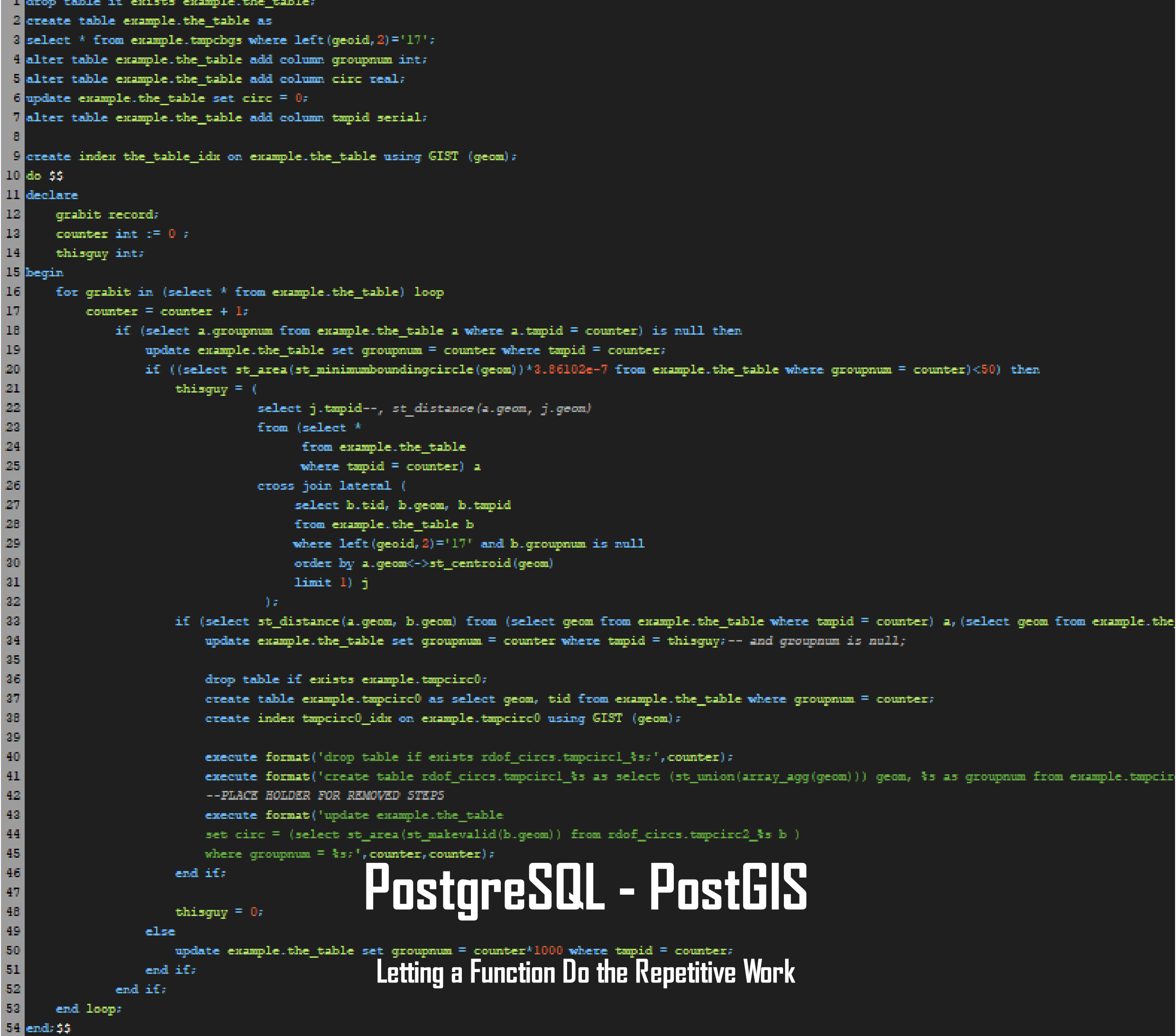Code Cheatsheet
**Still being organized**
def main(n: int):
return n+1
if __name__ == '__main__':
print(f'value plus one= {main(6)}')
value plus one= 7
/************************************************************
*Say you want to do analysis based on two tables in a PostgreSQL database,
*one containing census tracts while the other has block
*attributes. Now you're tasked with retreiving the block in
*each tract with the highest population density. One way
*would be to use a partitioned table.
************************************************************/
SELECT t.id, t.tract, b.block, b.population_density
FROM censusdata.tracts t
/*The left join retains all the elements in your tract
table while joining it up with any matching results
from the sub query below*/
LEFT JOIN (
SELECT *
FROM (
/*This sub query partitions/groups the census blocks
on the 'tract' field and orders these smaller groups
in a decending fashion so that the top row (#1) has
the most densely populated block*/
SELECT *,
row_number() over (
partition by tract
ORDER BY population_density desc
) as sorted_block_popdensity
FROM censusdata.blocks
) subquery
--Grab the first element of the ordered group
WHERE sorted_block_popdensity = 1
--Now tell it what field(s) to join the two tables on
) b on b.tract = t.tract

